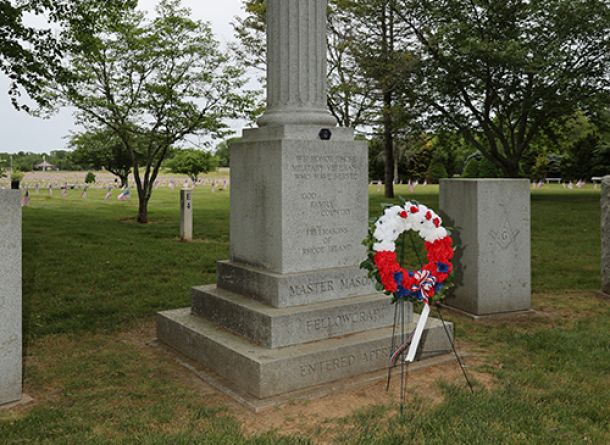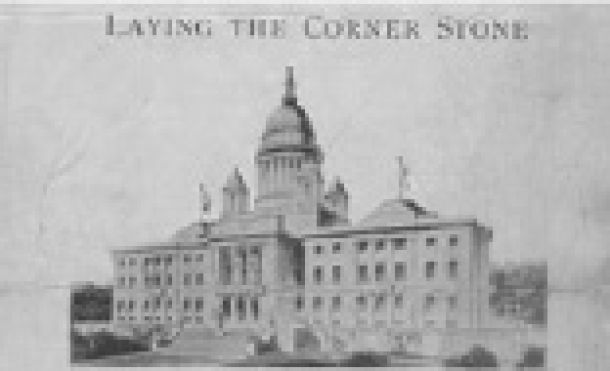Masonic Worry
A short time ago, December 6 of last year, I sat in front of my laptop ...
and watched the live video presentation by Sovereign Grand Commander Dave Glattly from Scottish Rite Northern Jurisdiction. If you missed it, the show was a review of the Jurisdiction’s two-year research to figure out where we are going as a Craft and what it will take to get us there, and how happy brothers are and what they saw as important. The study also took a sampling from non-Masons to figure out what the view was from the outside. Lastly, their plans for the future.
I was thrilled to hear all the plans. The main goal is to increase membership in Scottish Rite. How do you do that? Well, rather than a straight sales pitch to get more blue lodge brothers to join Scottish Rite in the Northern Jurisdiction, they have taken the long-term holistic view. You need more blue lodge brothers to make this happen, so, it was gratifying to learn that their desire is to help all Grand Lodges in all states participate and benefit from the program.
All in all, wonderful news, and great news for our own Grand Jurisdiction since our leadership continues to support the work of our public relations committee. Not only will Scottish Rite make the materials available, but they are prepared to help Grand Lodges customize the materials.
The tag line "Not just a man. A Mason." has been copyrighted and will appear with the square and compasses on all materials produced. There will be guidelines for their use to ensure that the message continues to be clear and concise across all venues.
I was also happy to hear that they recognize that some brothers want a deeper understanding of the Craft and how important it is to bring millennials into the Craft. Apparently, millennials will be drawn in by the increase of baby boomers who also represent potential members. I was thinking about this and it occurred to me that it would be wonderful if it was father and son connection. Yes, we know that happens, but I think this is more of an uncle/nephew happening. Dads are important, I know this, I’m one, but I am thinking of the favorite uncle who takes the edge off dad’s rigidness and is the buddy rather than the authoritarian.
It was also interesting to see them downplay history, as in famous brothers through time, etc. Not that it is a negative, but that it is a neutral. I think that this extends over to the military as a selling tool, as well. Both famous brothers and our collective service to the country and community are certainly pluses for any organization, kind of like extra jimmies or double fudge on your ice cream, but not the reason to get ice cream. It is the particular place you go to get your ice cream, Masonry versus Elks or other groups.
So, shared values, relationships and personal spiritual growth are the three big ideas that will draw men into the Craft. As we understand it, Freemasonry is a way of life. It’s not a weekend thing or supper out with the guys a few times a month, it is men wanting guidance and the tools to better themselves, an understanding of their own path to becoming the best they can be.
So why am I worried? Well, I look around and see lots of new initiates in all lodges across the state and I hear the old timers saying this happens in cycles. If we look at our history, you really have to say yeah almost, but not quite. Lots more join than stay connected, so the ranks have not replenished. We can see this through the consolidation of lodges across the country over the last 40 years. At some point endowments will be spent and diminished numbers will matter, and so it goes unless we use some of these answers provided by this research to foster change.
I was reading a book - dangerous stuff that reading - "Measured Expectations: the Challenges of Today’s Freemasonry" by Michael R. Poll. This is a great read. He asks tons of questions and provides lots of answers, or almost answers, to define his measured expectations. He also clearly uncovers one of the greatest mysteries of the Craft, communication. Apparently, we do a very good job of not communicating. We have cellphones, email, texting, and even regular old snail mail through the Post Office, so why do monthly meeting notices arrive two days before the meeting? Why do we treat the Trestle Boards like they are archival periodicals, with lists of all past masters, living past masters, lodge history, and other non-time-critical information? I can only think of two reasons 1.) to hide the information that everyone needs to know NOW, and 2.) To make it four pages long.
What is a lodge? I think of it as a group of men, a fraternity that meets and collectively manages the individual work of its members. They do this through regular meetings. Do they? I wonder how do we do this if we don't do anything Masonic at those meetings. Yes, I do understand that the opening and closing of a lodge has meaning handed down through the ages and within itself can be profound. The part of the meeting I am talking about is the space between the opening and the closing of a lodge. Further light needs to be squeezed into this activity by ensuring that there is clarity and an understanding of our work and its meaning. I suggest we take the non-Masonic programs from the profane and move them to another time and open them to the public for free as a public service, and refocus regular meeting time on educating ourselves.
So, are we inviting others to discover how we balance our lives through the principal points of our Craft, our tenets? Our mission is prescribed by our obligations and the ancient charges and it is primarily an inward focus. As the Sovereign Grand Commander so eloquently stated, "Our vision statement - - we will strive to be a fraternity that fulfills our Masonic obligation to care for our members - - is our vision, and will remain that way. We want everyone, members and non-members alike to know that ours is a fraternity based on timeless values, strong brotherhood, personal growth and caring for each other."
Let’s get our collective acts together and make sure we are prepared to not only clearly explain our mission and what is expected of new petitioners, but to put the necessary educational system in place to help them understand the meaning behind the ritual and its performance. This, I believe, will foster their continued participation and retain them.
By: Brother Ralph Boragine


